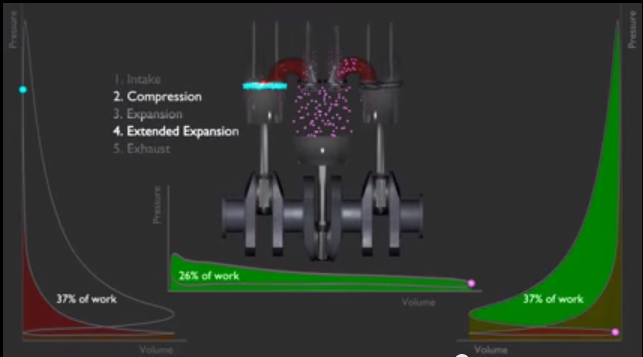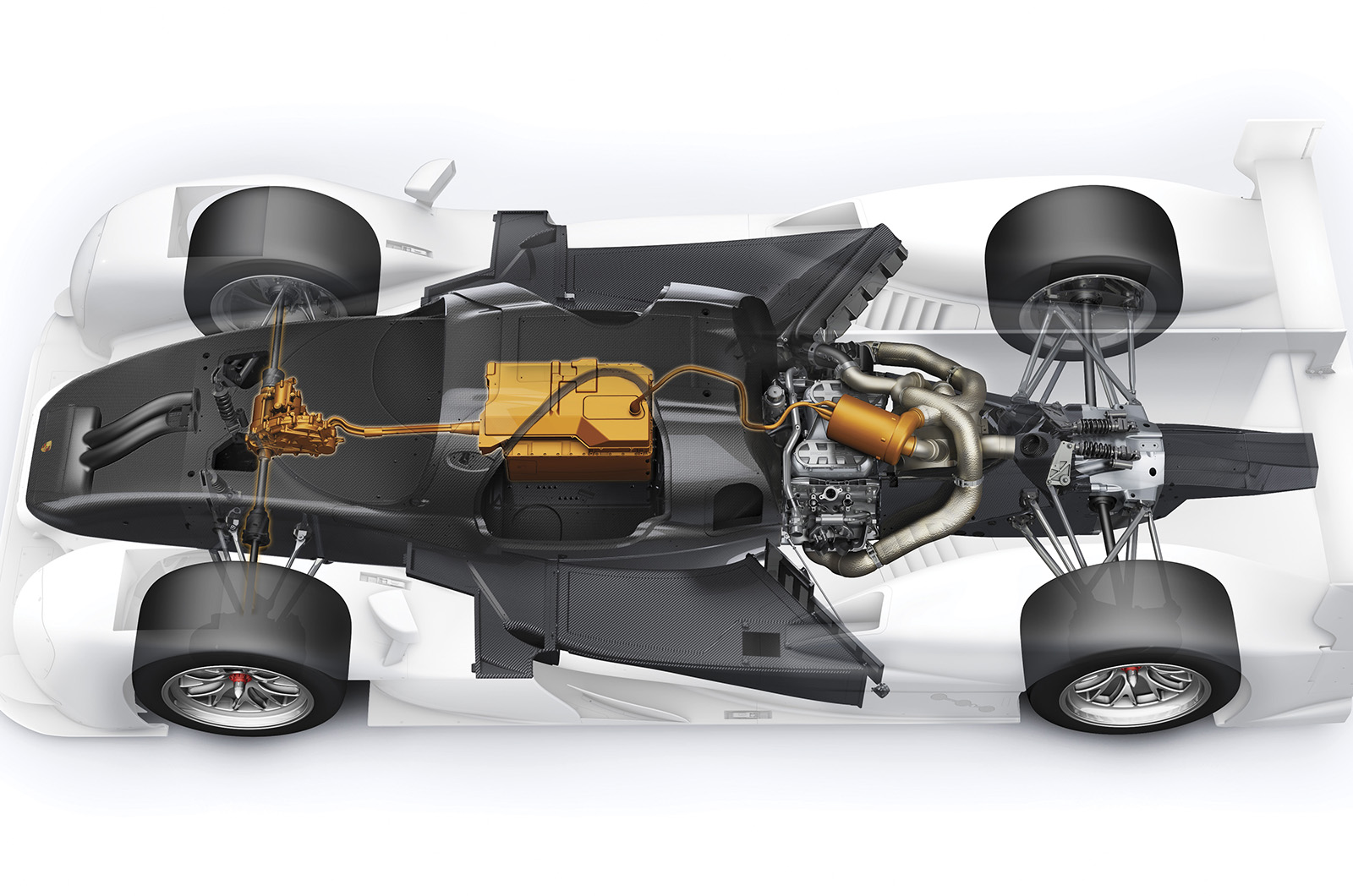- Login or Register
No account yet? Sign up
You are right. Another way to look at this - even if the exhaust valve had no flow losses and could be instantaneously opened fully at BDC, the pressure remaining in the cylinder prior to EVO represents unused energy which will be lost. The only way to recover this energy is by expanding it further in a piston expander, a blowdown turbine or similar.Tommy Cookers wrote:IMO large losses in blowdown are unavoidable in any intermittent-combustion (eg piston) engine, even a Mazda rotary
That is a direct attempt at heat loss recovery towards kinetic, bit like that 5-stroke engine which is basically a 4-stroke but with an additional piston just to capture heat and reuse it. An Atkinson cycle with a long enough combustion stroke would be a good alternative to improve thermal efficiency at a smaller cost of mechanical efficiency. Non-Formula one of course.riff_raff wrote:The Wright TC used blow-down exhaust turbines that were connected to the crankshaft using fluid couplings, which allowed some variation in speed and prevented the turbines from being back-driven by the crankshaft.

I believe they are using a turbocharger and a separate power turbine driving the MGUH.Powerslide wrote:http://www.youtube.com/watch?v=u5mO_xePdok
Inside there somewhere is a rather interesting heat energy recovery system. Maybe hooked up to a exhaust turbine propelled dynamo like MGU-H but a complicated looking exhaust from that V-4. A compound design perhaps one being a turbocharger and the other an MGU-H?
Yes they are, not compound style though but mounted more like a wastegate but instead an MGU-H.wuzak wrote:I believe they are using a turbocharger and a separate power turbine driving the MGUH.Powerslide wrote:http://www.youtube.com/watch?v=u5mO_xePdok
Inside there somewhere is a rather interesting heat energy recovery system. Maybe hooked up to a exhaust turbine propelled dynamo like MGU-H but a complicated looking exhaust from that V-4. A compound design perhaps one being a turbocharger and the other an MGU-H?


the exhaust turns the turbine which turns the compressor and the mgu-hTommy Cookers wrote:the mgu-k only propels the car or produces (for storage) electricity directly from engine power or by braking the carirsq4 wrote: ... It`s often mentioned in media that MGU-H converts termal energy of exhaust hot gasses into electrical (and MGU-K braking energy)-How, by means of termocouples, termoionic generator or somehow else?
the mgu-h only produces electricity (for storage or real-time use by the mgu-k) or turns the compressor part of the turbo
there is no heat-to-electricity conversion of the type you suggest
in 1950s engines of this type the part of the exhaust energy that the turbine can respond to was about 35% of the total exhaust energy

Thank you Tommy. But the the energy production you mention here how is it done? I understand that it's the MGUK the one who runs then the wheels but how to get from the gas to the voltage.Tommy Cookers wrote:Tommy Cookers wrote:the mgu-k only propels the car or produces (for storage) electricity directly from engine power or by braking the carirsq4 wrote: ... It`s often mentioned in media that MGU-H converts termal energy of exhaust hot gasses into electrical (and MGU-K braking energy)-How, by means of termocouples, termoionic generator or somehow else?
the mgu-h only produces electricity (for storage or real-time use by the mgu-k) or turns the compressor part of the turbo
there is no heat-to-electricity conversion of the type you suggest
but the turbine part ot the turbo responds to exhaust pressure or velocity, so driving the mgu-h to produce electricity
in 1950s engines of this type the part of the exhaust energy that the turbine can respond to was about 35% of the total exhaust energy

As I understood it`s like in f.e. electric rail vehicles. I think (not sure anymore, it was long time I learned that in school) it`s based on different speeds between rotor and electric field generated in unit, then when f.e. speed of rotor is greater than speed of field electrical energy can be sent back to the net, or in this case in baterries. Sure , you have electronic assembly to manage all that and convert AC-ICdren wrote:He explained it in the post you just quoted.